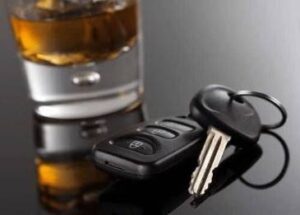BAC stands for blood alcohol concentration. It’s a measurement of how much alcohol is in your bloodstream and is expressed as milligrams of alcohol per milligrams of blood. A BAC test may reveal that you have an alcohol concentration of .10%, meaning that you have 1 part alcohol per 1,000 parts blood.
 Generally, the BAC percentage coincides with the level of drunkenness. The higher the number, the more likely your judgment and motor abilities are affected.
Generally, the BAC percentage coincides with the level of drunkenness. The higher the number, the more likely your judgment and motor abilities are affected.
According to the Centers for Disease Control and Prevention, the effects of alcohol by BAC are as follows:
- .02%:
- Some judgment loss
- Feeling of relaxation
- Slight increase in body temperature
- Altered mood
- .05%:
- Inability to control small muscles
- Impaired judgment
- Feeling good
- Decreased alertness
- Release of inhibition
- .08%:
- Poor muscle coordination
- Lack of judgment
- Decreased self-control
- Reasoning and memory impairment
- .10%:
- Slower reaction time and control
- Poor coordination
- Slurred speech
- Slowed thinking
- .15%:
- Substantial loss of muscle control
- Vomiting
- Significant loss of balance
In Texas, if a person has a BAC of .08% or more, they are legally considered intoxicated. If you drive while at or above the legal limit, you may be charged with a Class B misdemeanor DWI. However, if your BAC is at .15 or above while you’re driving, you could be charged with a Class A misdemeanor, a more severe crime.
Of course, you can also be charged with a DWI even if your BAC is under .08%. Such can happen when alcohol has impaired your normal faculties and you’re unable to safely operate your vehicle. As you can see from the chart above, even a BAC of .02% can start to affect your driving abilities.
HOW IS BAC MEASURED?
Before discussing the types of tests used to measure BAC, let’s first explore the science behind the numbers. When you, or any other person, drinks an alcoholic beverage, it’s absorbed through the stomach and small intestine and processed by the liver. But the liver can only digest about one standard drink per hour.
A few examples of one standard drink include:
- Beer: 12 ounces
- Malt liquor: 8 ounces
- Wine: 5 ounces
- Hard liquor: 1.5 ounces
Any alcohol you consume over one standard drink per hour isn’t immediately metabolized by the liver. It stays in your bloodstream and circulates throughout your body.
If you’re arrested on suspicion of drunk driving, law enforcement officials may administer a blood, breath, or urine test to determine your BAC. These tests work to detect the amount of alcohol remaining in your blood.
Blood tests are often considered the most accurate because they directly measure the proportion of alcohol to blood. Urine and breath tests estimate the blood-alcohol ratio, but their results correlate to those that would be generated from blood measurements.
That said, not one test is 100% accurate all of the time. Various factors can affect the analysis and generate false readings.
Although a chemical test might have revealed that you had a BAC at or above the legal limit, pleading guilty to a DWI charge isn’t your only option. Speak with one of our attorneys at Deandra Grant Law to learn about legal avenues you can pursue in your case.
For legal representation in Dallas, call us at (214) 225-7117 or contact us online today.
